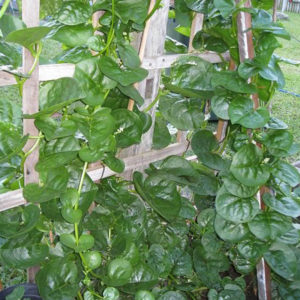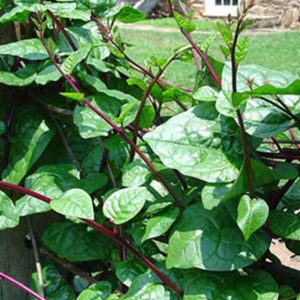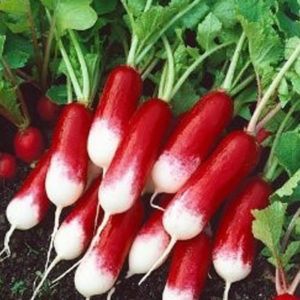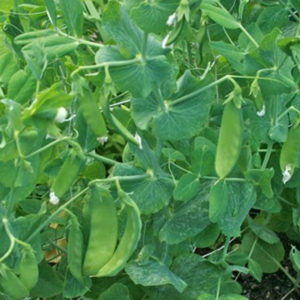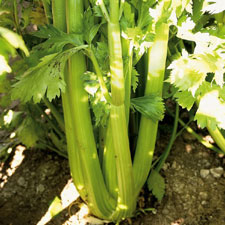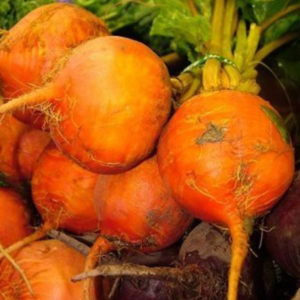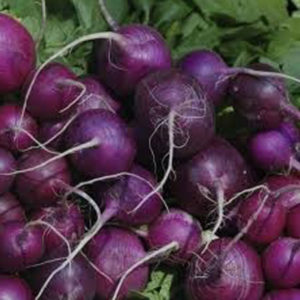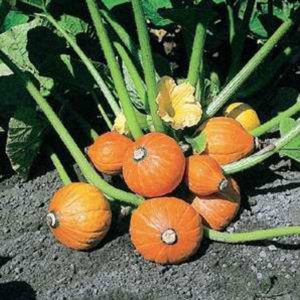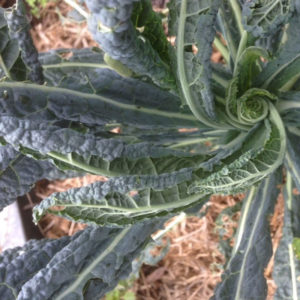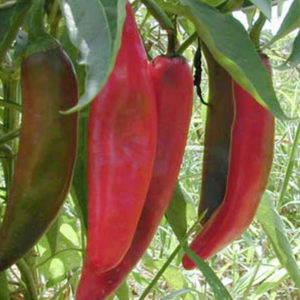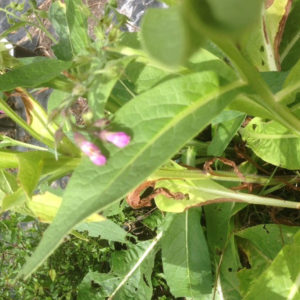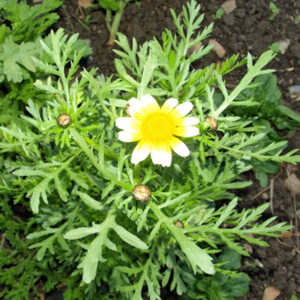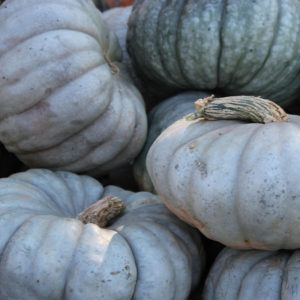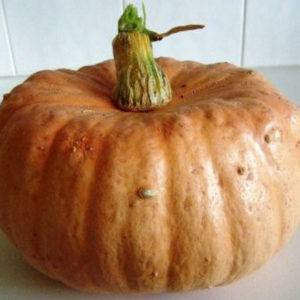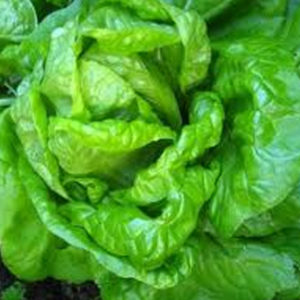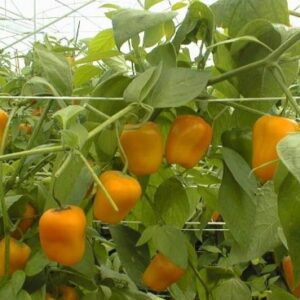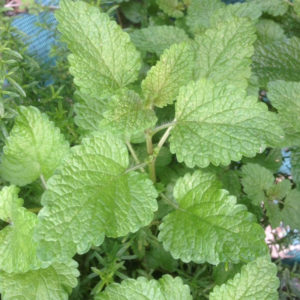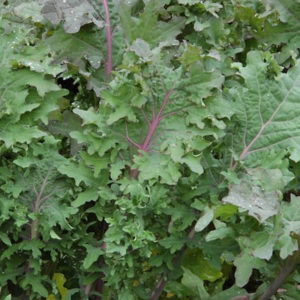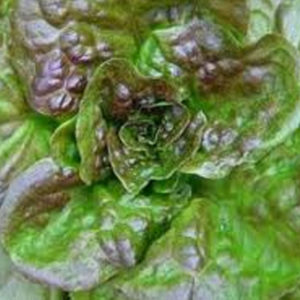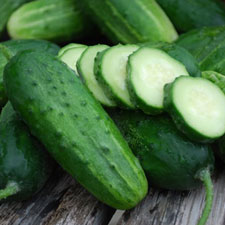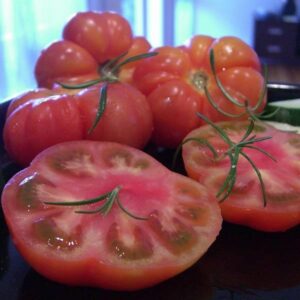-
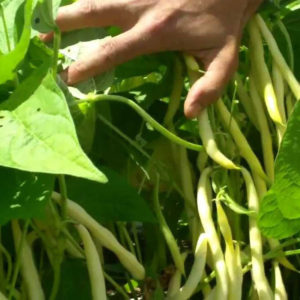 Phaseolus vulgaris Vibrant yellow podded dwarf bush bean about 15cm long these wonderful butter beans origins seem to come from South Carolina around the 1950’s. The strain is disease resistant, a vigorous grower with a good strong harvest. Best picked early while quite slender and they’ll be plenty to come. These are fun to seed save from as the bean is deep black.
Phaseolus vulgaris Vibrant yellow podded dwarf bush bean about 15cm long these wonderful butter beans origins seem to come from South Carolina around the 1950’s. The strain is disease resistant, a vigorous grower with a good strong harvest. Best picked early while quite slender and they’ll be plenty to come. These are fun to seed save from as the bean is deep black. -
 Lagenaria siceraria You’ll note by the unusual seed that this is not of the pumpkin or squash family and should be eaten when young like a zucchini. And it’s delicious by all the taste tests. Creamy with great texture. Growing conditions are much like the ‘squash’ Tromboccini and again watching these vigorous plants grow is a delight. Highly recommended and rare.
Lagenaria siceraria You’ll note by the unusual seed that this is not of the pumpkin or squash family and should be eaten when young like a zucchini. And it’s delicious by all the taste tests. Creamy with great texture. Growing conditions are much like the ‘squash’ Tromboccini and again watching these vigorous plants grow is a delight. Highly recommended and rare. -
 Allium ampeloprasum var. porrum An old heirloom known in American seed catalogues since 1870. Also known as Giant Musselburgh. White long thick stems with creamy heart. Will blanch by hilling up as extends. Plant Autumn-Spring direct or trays & plant out 10cm apart in well composted soil full sun. Mulch well. Harvest as spring onions or strong leeks.
Allium ampeloprasum var. porrum An old heirloom known in American seed catalogues since 1870. Also known as Giant Musselburgh. White long thick stems with creamy heart. Will blanch by hilling up as extends. Plant Autumn-Spring direct or trays & plant out 10cm apart in well composted soil full sun. Mulch well. Harvest as spring onions or strong leeks. -
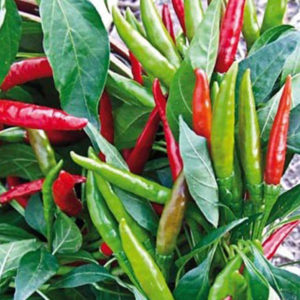 Capsicum annuum Compact plant even suitable for a largish pot with beautiful upright green to red fruit reaching upward on top of plant, so quite unusual and ornamental. And of course delicious. Found right through Asia and introduced by the Spanish conquistadors. Considered very hot yet used in most of the Thai dishes we eat. Recommended.
Capsicum annuum Compact plant even suitable for a largish pot with beautiful upright green to red fruit reaching upward on top of plant, so quite unusual and ornamental. And of course delicious. Found right through Asia and introduced by the Spanish conquistadors. Considered very hot yet used in most of the Thai dishes we eat. Recommended. -
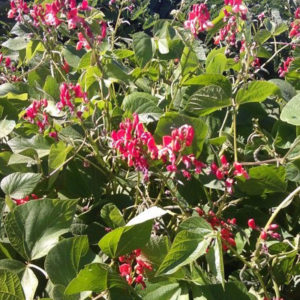
Phaseolus coccineus Originally from the mountains of Central America, Scarlet Runners are often grown as an ornamental as the flowers with contrasting green leaves are dramatic & beautiful. Planted in spring the climber can produce flowers all summer till autumn when the beans begin to set in the cooler weather. Beans when picked young are long flat tender and very tasty. Or let beans dry on plant and are considered tasty.
-
Out of stock
 Solanum lycopersicum L. Round yellow peach coloured round fruit to 5cm with a slight soft fuzzy skin which deters insects. Excellent sweet variety with low acid and a long ripening season. One of our favourites and a must try.
Solanum lycopersicum L. Round yellow peach coloured round fruit to 5cm with a slight soft fuzzy skin which deters insects. Excellent sweet variety with low acid and a long ripening season. One of our favourites and a must try. -
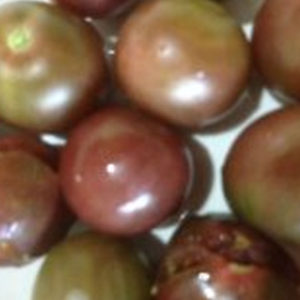 Solanum lycopersicum L. Perfectly round dark red/black fruits with rich, sweet flavour growing on indeterminate plant that needs staking. Research show its origins start in Florida and has been very popular here for the last 5 years. If you have problems with birds these are great because they cant see them! When green fruit starts getting a red hue you know they're ready.
Solanum lycopersicum L. Perfectly round dark red/black fruits with rich, sweet flavour growing on indeterminate plant that needs staking. Research show its origins start in Florida and has been very popular here for the last 5 years. If you have problems with birds these are great because they cant see them! When green fruit starts getting a red hue you know they're ready. -
Out of stock
 Brassica oleracea A rare combination of cauliflower colours that will all taste delicious yet with subtle differences.
Brassica oleracea A rare combination of cauliflower colours that will all taste delicious yet with subtle differences. -
Out of stock
 Brassica oleracea Also known as 'Two Peters' this is the softest kale with long green serrated leaves that are side picked and steamed or used fresh while leaves are small. Loves the cooler months this tasty Russian variety is great in smoothies. Plant direct or in trays Autumn to late Spring.
Brassica oleracea Also known as 'Two Peters' this is the softest kale with long green serrated leaves that are side picked and steamed or used fresh while leaves are small. Loves the cooler months this tasty Russian variety is great in smoothies. Plant direct or in trays Autumn to late Spring. -
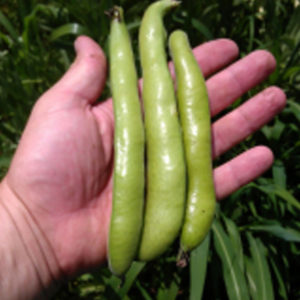 Vicia faba Long plants up to 120cm Aquadulce are the most common and most reliable to grow for those who are wanting a good tasty feed of broad beans. Pods are around 15cm with around 5 seeds per pod. Flowers are white with purple touches. Broad beans can be planted Autumn and Winter for a Spring crop although the flowers can be affected by frosts.
Vicia faba Long plants up to 120cm Aquadulce are the most common and most reliable to grow for those who are wanting a good tasty feed of broad beans. Pods are around 15cm with around 5 seeds per pod. Flowers are white with purple touches. Broad beans can be planted Autumn and Winter for a Spring crop although the flowers can be affected by frosts.


